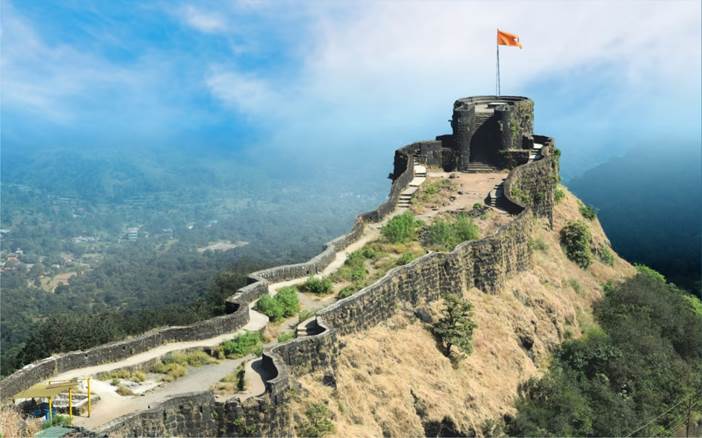Maratha Military Landscapes of India Inscribed in the UNESCO World Heritage List as India’s 44th Entry

IN NEWS:
Maratha Military Landscapes of India Inscribed in the UNESCO World Heritage List as India’s 44th Entry
ANALYSIS:
- At the 47th Session of the World Heritage Committee, held in Paris, France, the ‘Maratha Military Landscapes of India’ has been inscribed on the UNESCO World Heritage List, making it India’s 44th World Heritage Property.
- The nomination represented India’s official submission for the 2024–25 cycle.
- The inscription recognises the Maratha Empire’s architectural ingenuity and strategic vision from the 17th to 19th centuries CE, showcasing India’s rich cultural and historical legacy.
- The announcement was lauded by Prime Minister Shri Narendra Modi, Minister of Culture Shri Gajendra Singh Shekhawat, and Maharashtra Chief Minister Shri Devendra Fadnavis.
Key Highlights of the Inscription:
- The proposal underwent an 18-month evaluation process that included technical consultations with ICOMOS (International Council on Monuments and Sites) and site visits before approval.
- 18 of the 20 State Parties supported India’s nomination; the discussion lasted 59 minutes during the Committee’s session.
- The property was nominated under UNESCO criteria (iv) and (vi):
- (iv) – For its architectural and technological significance.
- (vi) – For its association with historical events and living traditions.
Geographical Spread & Composition:
- The Maratha Military Landscapes consist of 12 forts spread across Maharashtra and Tamil Nadu:
- Hill Forts: Salher, Shivneri, Lohgad, Raigad, Rajgad, Gingee
- Hill-Forest Fort: Pratapgad
- Hill-Plateau Fort: Panhala
- Coastal Fort: Vijaydurg
- Island Forts: Khanderi, Suvarnadurg, Sindhudurg
- These forts represent a diverse range of terrains, from coastal outposts to elevated strongholds, reflecting advanced geographical and defensive planning.
Protection and Conservation:
- Protected by ASI: Shivneri, Lohgad, Raigad, Suvarnadurg, Panhala, Vijaydurg, Sindhudurg, Gingee
- Protected by Maharashtra Directorate of Archaeology and Museums: Salher, Rajgad, Khanderi, Pratapgad
- The Archaeological Survey of India (ASI) serves as the nodal agency for all World Heritage-related matters in India.
Significance of the Recognition:
- Highlights India’s evolving approach to heritage preservation through the inclusion of cultural landscapes beyond individual monuments.
- Reinforces India’s global cultural leadership and commitment to heritage conservation.
- Marks a continuation of India’s strong presence on the global heritage map, following the 2024 inscription of Moidams of Charaideo, Assam.
- Reflects India’s effort to showcase regional identities, military innovation, and architectural adaptation across ecological zones.
STATIC / BACKGROUND INFORMATION:
- UNESCO World Heritage Convention, 1972:
- Aims to identify, protect, and preserve sites of Outstanding Universal Value (OUV).
- 196 countries are signatories to the Convention.
- India’s Global Ranking:
- 6th globally and 2nd in the Asia-Pacific region in terms of the number of World Heritage Sites.
- India’s Tentative List:
- Currently includes 62 sites, which are prerequisites for future nominations.
- World Heritage Committee:
- Composed of representatives from 21 State Parties, elected for a four-year term.
- India is a member for the 2021–2025 term.
- Previous Indian Inscription (2024):
- Moidams of Charaideo, Assam at the 46th Session in New Delhi.
Updated – 11 Jul 2025 ; 10:38 PM | PIB
News Source:PIB Delhi